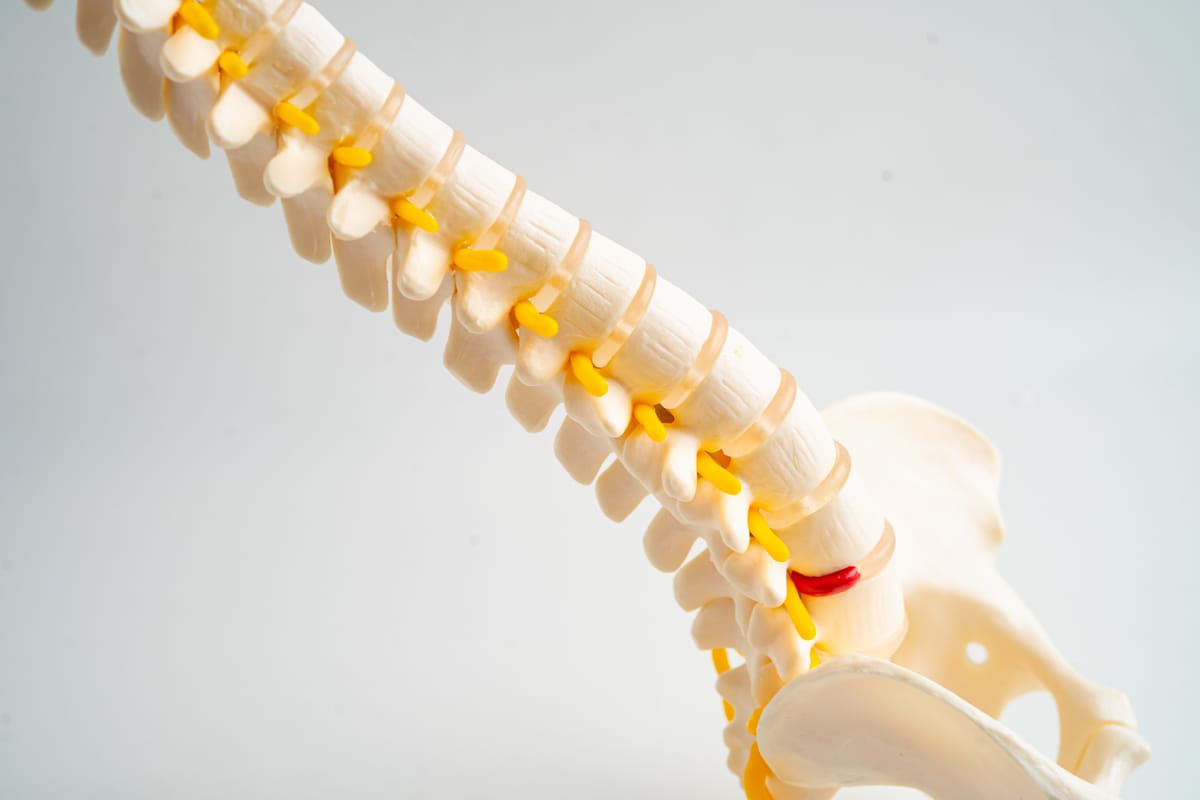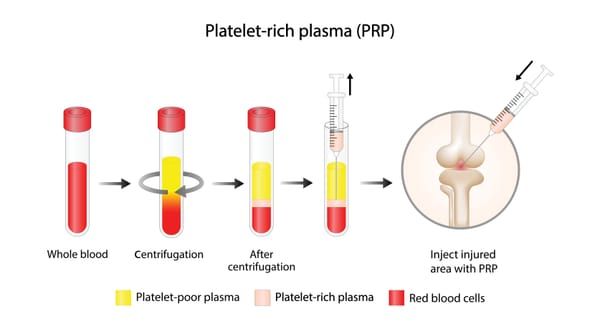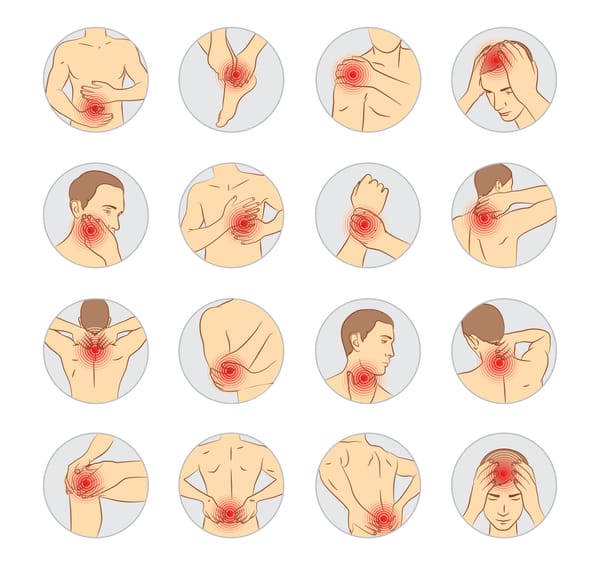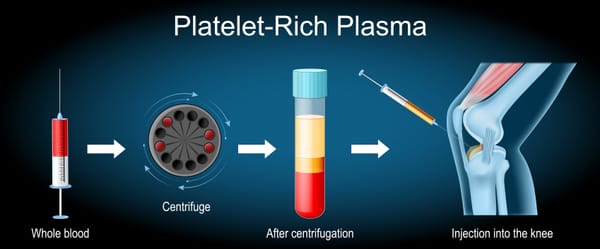Lumbar Radiculopathy: Understanding the Cause of Your Back and Leg Pain

Lumbar radiculopathy, often referred to as sciatica, is a condition that can cause intense pain, numbness, or weakness radiating from the lower back into the legs. It’s a common issue that affects daily activities like walking, sitting, or standing, and it can feel overwhelming for those experiencing it. Understanding lumbar radiculopathy is the first step toward finding relief and reclaiming mobility. In this blog post, we’ll explore what lumbar radiculopathy is, its causes, symptoms, and treatment options.
What is Lumbar Radiculopathy?
Lumbar radiculopathy is a condition caused by irritation, compression, or injury to one or more nerve roots in the lumbar spine (the lower back, vertebrae L1-L5).
These nerve roots branch off the spinal cord and exit through small openings between the vertebrae, forming the nerves that supply sensation and movement to the legs. When a nerve root is compressed or inflamed, it can cause pain and other symptoms that radiate along the nerve’s path, often into the buttocks, thighs, or feet.
The term “sciatica” is commonly used to describe lumbar radiculopathy when it affects the sciatic nerve, the largest nerve in the body, which runs from the lower back through the legs. Lumbar radiculopathy affects about 3-5% of adults at some point, with a higher prevalence in those aged 40-60, per a 2020 study in The Spine Journal.
Causes of Lumbar Radiculopathy
Lumbar radiculopathy occurs when a nerve root in the lower back is irritated or compressed. Common causes include:
- Herniated Disc: The most frequent cause, where the soft inner material of a spinal disc bulges or ruptures, pressing on a nerve root.
- Degenerative Disc Disease: Age-related disc wear reduces disc height, narrowing the space where nerve roots exit, leading to compression.
- Spinal Stenosis: Narrowing of the spinal canal or nerve root openings (foraminal stenosis) due to bone spurs or thickened ligaments.
- Spondylolisthesis: A vertebra slips forward, pinching a nerve root.
- Trauma: Injuries from falls, accidents, or heavy lifting can damage discs or vertebrae, compressing nerves.
- Tumors or Cysts: Rare growths in or near the spine can press on nerve roots.
- Infections or Inflammation: Conditions like spinal infections or inflammatory diseases (e.g., ankylosing spondylitis) can irritate nerves.
Risk factors include obesity, repetitive lifting, poor posture, or jobs involving prolonged sitting or heavy physical work.
Symptoms of Lumbar Radiculopathy
Lumbar radiculopathy is characterized by symptoms that follow the path of the affected nerve root, typically affecting one side of the body. Common symptoms include:
- Radiating Pain: Sharp, burning, or electric-shock-like pain starting in the lower back and traveling through the buttocks, thigh, or calf, sometimes reaching the foot.
- Numbness or Tingling: “Pins and needles” or loss of sensation in the leg or foot.
- Weakness: Muscle weakness in the leg or foot, making it hard to lift the foot (foot drop) or stand on toes.
- Worsening with Activity: Pain often intensifies with sitting, coughing, sneezing, or bending, which increases pressure on the nerve.
- Relief with Position Changes: Lying down or walking may ease symptoms for some.
Symptoms vary depending on the affected nerve root (e.g., L4, L5, or S1), with L5-S1 involvement being most common, causing classic sciatica. Severe cases may include cauda equina syndrome (a medical emergency) with symptoms like loss of bowel/bladder control or severe leg weakness, requiring immediate attention.
Diagnosing Lumbar Radiculopathy
Diagnosing lumbar radiculopathy involves a thorough evaluation by a healthcare provider, often a neurologist, orthopedist, or pain specialist:
- Medical History: Discussing pain onset, location, triggers (e.g., sitting vs. walking), and any history of trauma or conditions like diabetes.
- Physical Exam: Testing leg strength, reflexes, sensation, and specific maneuvers like the straight leg raise to provoke radicular pain.
- Imaging:
- MRI: The gold standard to visualize disc herniation, stenosis, or other causes of nerve compression.
- CT Scan: Used if MRI is unavailable, to assess bone spurs or structural issues.
- X-rays: To check for spondylolisthesis or arthritis.
- Electrodiagnostic Tests: Electromyography (EMG) or nerve conduction studies to confirm nerve root involvement and rule out other neuropathies.
A 2021 study in Journal of Orthopaedic & Sports Physical Therapy noted that combining clinical exams with MRI improves diagnostic accuracy for lumbar radiculopathy by 85-90%.
Treatment Options for Lumbar Radiculopathy
Treatment aims to relieve nerve compression, reduce pain, and restore function, starting with conservative approaches and escalating as needed.
1. Conservative Treatments
- Physical Therapy: Exercises to strengthen core and back muscles, improve posture, and reduce nerve pressure. Stretching and traction may help.
- Medications:
- NSAIDs (e.g., ibuprofen) for inflammation and pain.
- Oral Steroids (e.g., prednisone) for short-term relief of severe inflammation.
- Neuropathic Drugs (e.g., gabapentin, duloxetine) for nerve-related pain.
- Muscle Relaxants for spasms.
- Lifestyle Changes: Weight loss, ergonomic adjustments (e.g., proper seating), and avoiding activities that worsen symptoms (e.g., heavy lifting).
- Activity Modification: Short-term rest followed by gradual return to activity to avoid deconditioning.
2. Interventional Procedures
- Epidural Steroid Injections: Fluoroscopy- or ultrasound-guided injections to reduce inflammation around the nerve root. A 2020 study in Pain Medicine found 60-70% of patients had significant relief for 1-3 months.
- Selective Nerve Root Blocks: Target specific nerve roots for diagnostic or therapeutic relief.
- Spinal Cord Stimulation: For chronic, unresponsive neuropathic pain, implantable devices deliver electrical pulses to block pain signals.
3. Surgical Treatments
- Microdiscectomy: Removes part of a herniated disc pressing on a nerve, effective for 80-90% of patients with disc-related radiculopathy, per a 2019 study in Spine.
- Laminectomy: Removes bone or ligaments to relieve stenosis-related compression.
- Spinal Fusion: Stabilizes the spine for severe spondylolisthesis or instability.
- Surgery is considered when conservative treatments fail after 6-12 weeks or if severe symptoms (e.g., significant weakness or cauda equina syndrome) are present.
4. Complementary Therapies
- Chiropractic Care: Gentle adjustments to improve spinal alignment, with caution to avoid aggravating nerve compression.
- Acupuncture: May reduce pain perception, with some studies showing benefits for radicular pain.
- Psychological Support: Cognitive-behavioral therapy or mindfulness to manage chronic pain’s emotional toll.
A 2021 review in Global Spine Journal found that 70-80% of lumbar radiculopathy patients improve with conservative treatments within 3-6 months, with surgery reserved for severe or persistent cases.
Living with Lumbar Radiculopathy
Lumbar radiculopathy can be frustrating, limiting your ability to sit, walk, or work comfortably. Keep a symptom diary to track pain triggers and share details with your healthcare team to guide treatment. Support groups, through organizations like Spine-Health (spine-health.com) or the American Academy of Orthopaedic Surgeons (aaos.org), or online platforms like Reddit, offer a space to connect with others and share coping strategies.
Emotional support is crucial, as chronic pain can lead to stress or depression. Lean on counselors, family, or friends for encouragement. Practical steps, like using a lumbar support cushion, alternating sitting and standing, or practicing gentle stretches, can help manage symptoms.
Why Awareness Matters
Lumbar radiculopathy affects millions, yet it’s often confused with general back pain or other conditions, delaying proper treatment. Raising awareness ensures patients receive accurate diagnoses and timely interventions, improving outcomes. Early treatment can prevent chronic pain or complications like permanent nerve damage.
If you’re experiencing radiating back or leg pain, numbness, or weakness, consult a spine specialist, neurologist, or orthopedist to explore whether lumbar radiculopathy is the cause. Resources like Spine-Health or the North American Spine Society (spine.org) offer valuable information and support.
By understanding lumbar radiculopathy, we can empower those affected to seek relief and reclaim their mobility. Let’s keep the conversation going—no one should face this pain alone.
Disclaimer: This blog post is for informational purposes only and not a substitute for professional medical advice. Consult a healthcare provider for diagnosis and treatment of lumbar radiculopathy.



